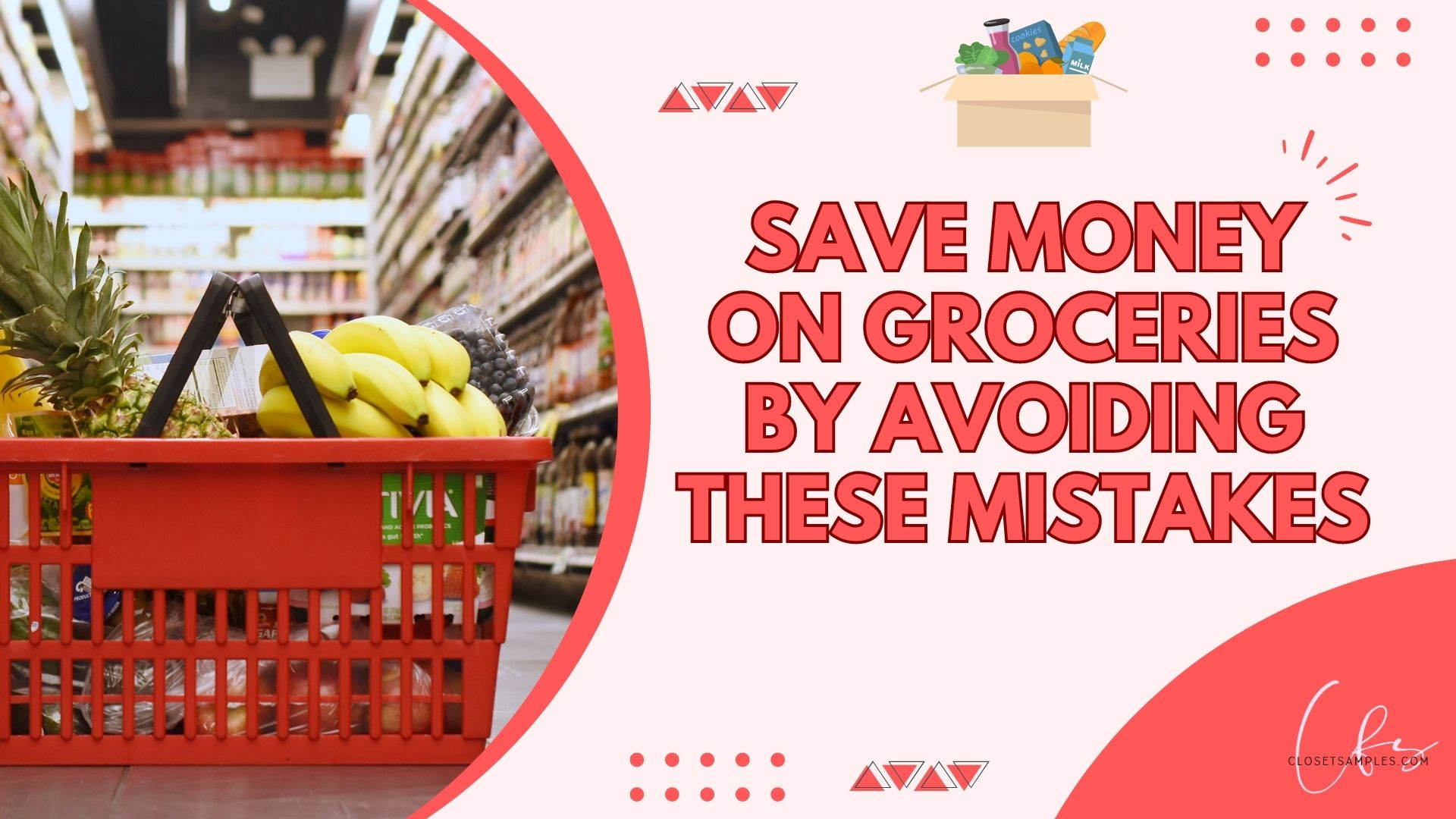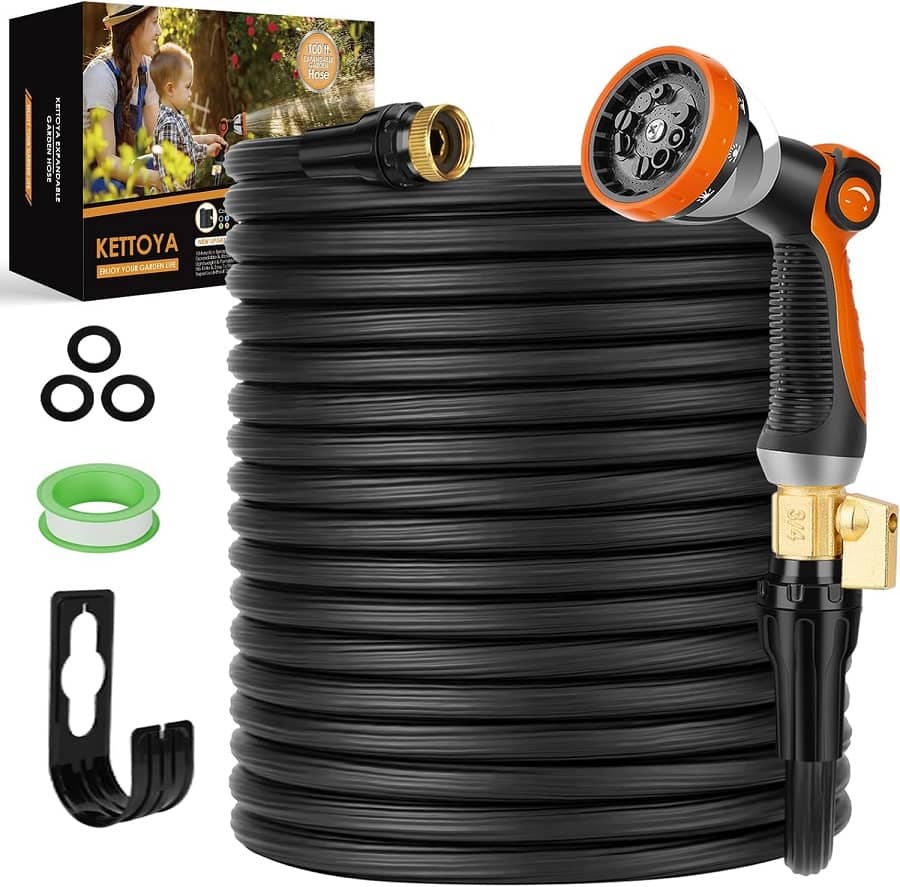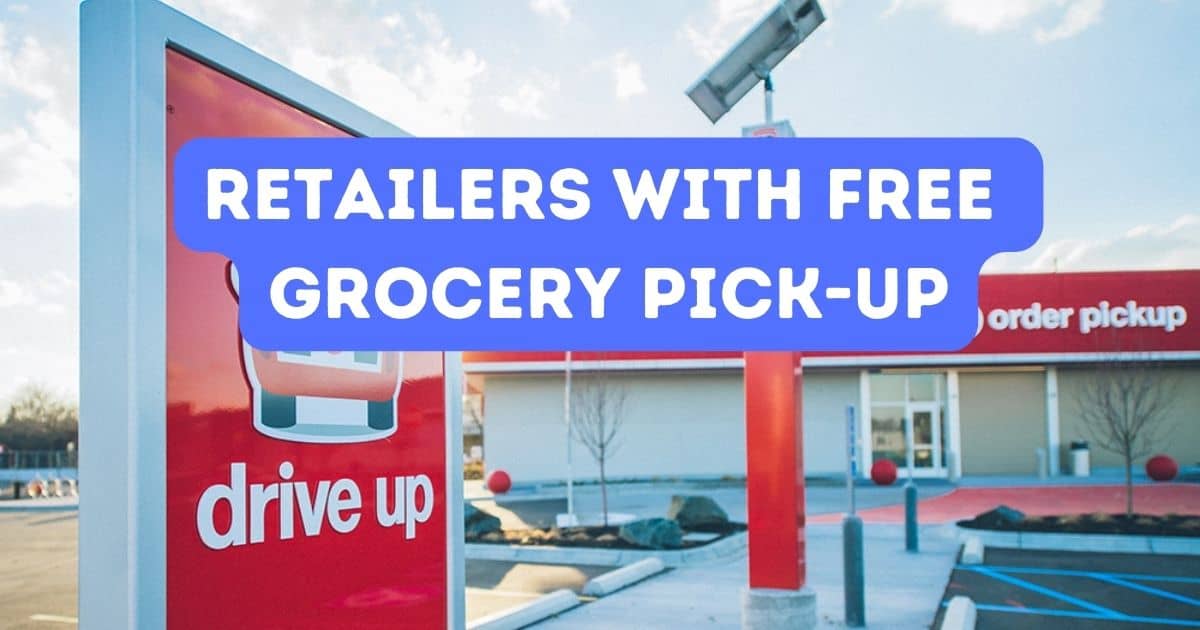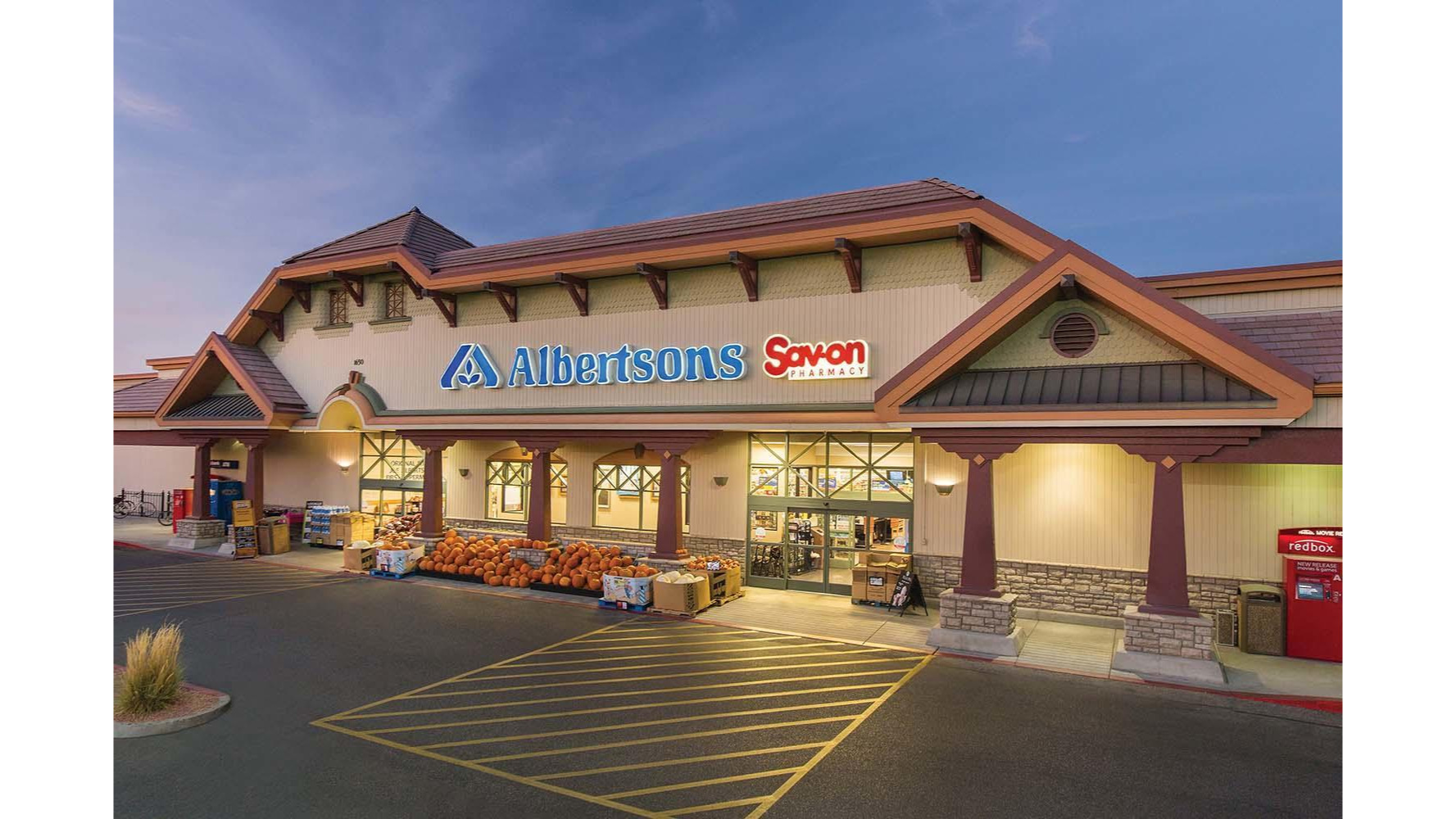Are you tired of feeling like your grocery shopping trips are draining your wallet? Do you want to avoid costly mistakes and make smarter choices when it comes to purchasing your groceries? Look no further! This comprehensive guide is here to shed light on the hidden pitfalls of grocery shopping and empower you with the knowledge to protect your finances.
Grocery shopping can be a minefield of tempting products and impulse buys that can wreak havoc on your budget. But fear not! By understanding the twelve common traps that many shoppers fall into, you can navigate the grocery store with confidence and emerge victorious in your quest for savings.
Don't forget the shopping list!
Have you ever found yourself aimlessly wandering through the grocery store, unsure of what you actually need to buy? This is a common pitfall known as "Listless Shopping," and it can lead to overspending and forgetting essential items. To avoid falling into this trap, it's crucial to prepare a
well-organized grocery list before you embark on your shopping trip.
By creating a detailed list, with priority items listed at the top, you can stay focused and ensure that you don't overlook any crucial purchases. Start by taking inventory of your pantry, refrigerator, and freezer to identify what items you need to replenish. Then, plan your meals for the upcoming week and jot down the necessary ingredients. Don't forget to include household essentials like toiletries and cleaning supplies as well.
Organizing your list with priority items at the forefront is key. This means placing the most important and frequently used items at the top, followed by the less critical ones. By doing so, you'll be less likely to forget essential items and reduce the need for multiple trips to the store.
Having a well-prepared list also helps you resist the temptation of impulse purchases. With a clear plan in mind, you can stick to your intended purchases and avoid buying unnecessary items that can quickly add up and strain your budget.
So, before you step foot in the grocery store, take a few minutes to create a comprehensive and organized grocery list. Not only will this save you time and effort, but it will also protect your finances and ensure that you return home with all the items you need.
Check your grocery stock before you leave
Have you ever arrived at the grocery store only to realize that you're not sure what you already have at home? This common mistake, known as "Grocery Shopping Blind," can result in purchasing duplicate items or forgetting to buy essential ingredients. To avoid these consequences and make more informed shopping decisions, it's important to have a clear understanding of what you already have before you head to the store.
Before embarking on your grocery shopping trip, take a few moments to assess your pantry, refrigerator, and freezer. This step allows you to see exactly what items you already have on hand. By knowing what's available, you can avoid purchasing unnecessary duplicates and ensure that you make the most of the ingredients you already possess.
To stay organized and prevent oversight, create a comprehensive list of the items you need based on your meal plans and recipes. Consider the ingredients required for the dishes you intend to prepare, as well as any household essentials that need replenishing. Once you have your list, cross-check it with your existing inventory. This will help you identify any items you already have and avoid unnecessary purchases.
Cross-checking your list with your existing inventory also allows you to plan your meals more effectively. You can make adjustments based on what you already have available, ensuring that you utilize ingredients before they expire and minimizing waste.
Having a clear understanding of your existing inventory before you head to the grocery store empowers you to make more informed decisions. It helps you avoid the frustration of purchasing duplicate items and ensures that you have all the necessary ingredients for your planned meals. This not only saves you money but also reduces food waste, benefiting both your wallet and the environment.
So, before you set off on your next grocery shopping trip, take the time to assess your pantry, refrigerator, and freezer, and create a comprehensive list that is cross-checked with your existing inventory. This simple step will help you shop with confidence and make smarter choices, ultimately protecting your finances and minimizing waste.
Eat before your shop for groceries
Have you ever found yourself succumbing to the temptation of buying unnecessary items when shopping for groceries on an empty stomach? This common mistake, known as "Shopping Hungry," can lead to impulse purchases and deviating from your intended shopping list. To avoid falling into this trap and making regrettable choices, it's important to satisfy your hunger before stepping foot in the grocery store.
When you're hungry, everything in the store tends to look appealing. Your senses are heightened, and cravings can easily override rational decision-making. This can result in grabbing snacks, sweets, or other indulgent items that you may not need or have planned for. These impulsive purchases can quickly add up and derail your budget.
To combat the allure of hunger-induced cravings, it's essential to eat a satisfying meal or snack before heading to the grocery store. By shopping on a full stomach, you'll be better equipped to resist the temptations and make more rational purchasing decisions. A satiated appetite will help you stay focused on your shopping list and avoid unnecessary detours through the snack aisles.
By shopping on a full stomach and following a well-prepared shopping list, you'll be able to make more intentional and informed choices. You'll be less likely to succumb to the impulse buys that can drain your wallet and derail your healthy eating goals. Plus, by avoiding unnecessary purchases, you can stay within your budget and reduce food waste.
Know when to stock up on groceries
One of the common mistakes in grocery shopping is not taking full advantage of sale items and missing out on valuable opportunities to stock up. Sales and promotions offer a chance to secure significant savings and build up your pantry with essential items. Unfortunately, many shoppers fail to capitalize on these opportunities and end up spending more in the long run. By understanding the importance of stocking up during sales, you can maximize your savings and reduce your overall grocery expenses.
Sales events provide discounted prices on a variety of products, making it the perfect time to purchase items in larger quantities. When you come across sale items with a longer shelf life, consider buying extra quantities to create a well-stocked pantry. Not only will you save money on each discounted item, but you'll also reduce the frequency of your future shopping trips, saving time and effort.
To make the most of sales and promotions, it's crucial to assess your needs and identify the essential items that are on sale. Take the time to review your regular grocery list and determine which items can be purchased in bulk or stored for later use. Non-perishable items like canned goods, dry goods, and household essentials are excellent candidates for stocking up during sales. By purchasing these items in larger quantities, you can take advantage of the discounted prices and ensure that you have a sufficient supply for future use.
Building a well-stocked pantry has several benefits beyond immediate cost savings. It provides convenience and peace of mind, knowing that you have a reserve of essential items at your disposal. It also allows you to be more flexible with your meal planning, as you'll have a wider variety of ingredients to work with. Plus, by reducing the frequency of your grocery shopping trips, you'll save both time and transportation costs.
When stocking up during sales, it's important to consider the shelf life and storage requirements of the items you're purchasing. Ensure that you have adequate space to store your extra purchases and that you follow proper storage guidelines to maintain their quality and freshness. Additionally, be mindful of expiration dates and consume the items before they go bad.
Remember to assess your needs, identify essential sale items, and consider purchasing extra quantities during sales events. By embracing this proactive approach to grocery shopping, you'll be able to make the most of your budget, reduce waste, and ensure that your pantry is always well-stocked with the items you need. So, keep an eye out for sales, plan your purchases wisely, and enjoy the long-term savings and convenience that come with a well-stocked pantry.
Don't forget to check the weekly sales ads
One mistake that many shoppers make during grocery shopping is overlooking the significance of
checking the weekly ads. These ads are filled with valuable savings and provide insights into discounted items and special promotions that can have a significant impact on your grocery budget. By taking the time to review the weekly ads and incorporating them into your meal planning, you can maximize your savings and make the most of your shopping trips.
Weekly ads are like hidden treasure troves of opportunities to save money. They feature a variety of discounted items, special deals, and loss leaders—products sold at a low price to attract customers. These offers are designed to entice shoppers and provide substantial savings on everyday grocery essentials. However, many shoppers fail to take advantage of these opportunities, resulting in missed chances to stretch their budget further.
To ensure you don't overlook these valuable savings, it's important to make a habit of reviewing the weekly ads before planning your shopping trips. Set aside some time each week to browse through the ads of your local grocery stores. You can usually find them in newspapers, online on store websites, or through dedicated apps. Familiarize yourself with the deals and discounts available and take note of any items that align with your needs and preferences.
Once you've reviewed the weekly ads, incorporate the discounted items and loss leaders into your meal planning. Consider how these discounted products can be incorporated into your recipes and meals for the week. Take advantage of lower-priced meats, fresh produce, and pantry staples that are on sale to create a variety of delicious and budget-friendly meals. By strategically planning your menu around the discounted items, you can enjoy significant savings while still enjoying flavorful and nutritious meals.
Additionally, don't limit yourself to the items on your shopping list when exploring the weekly ads. Keep an open mind and be willing to try new products or experiment with different ingredients if they are available at a discounted price. This can be an excellent opportunity to discover new flavors and diversify your culinary repertoire while staying within your budget.
Remember, the goal of incorporating the weekly ads into your meal planning is to take advantage of the savings and discounts available. By doing so, you can make your grocery budget stretch further and potentially free up funds for other expenses or savings. However, it's essential to strike a balance and ensure that the discounted items align with your needs and preferences. Avoid buying items solely because they are on sale if they don't fit into your meal plans or household requirements.
Don't walk up and down every aisle
One of the common pitfalls of grocery shopping is aimlessly wandering through every aisle of the store, which often leads to unnecessary purchases and overspending. It's all too easy to get lured in by eye-catching displays and promotions, ultimately buying items that you don't actually need. To prevent falling into this trap, it's important to stay focused and resist the temptation of unnecessary items and displays. By following a few simple strategies, you can make your shopping trip more intentional, efficient, and budget-friendly.
The first step in resisting the temptation of unnecessary items is to create a well-prepared shopping list. Before heading to the grocery store, take the time to carefully plan your meals and make a comprehensive list of the items you truly need. Organize your list according to the store's layout, grouping similar items together. This will help you navigate the aisles more efficiently and avoid aimlessly wandering through sections that don't align with your shopping needs.
Once you're inside the store, stay focused and disciplined. Remind yourself of your goals and the items on your list. Stick to the aisles that contain the products you need, and resist the urge to deviate from your planned route. This will help you avoid unnecessary detours that can lead to impulse purchases.
Be mindful of eye-catching displays and promotions strategically placed throughout the store. While they may be tempting, remember that their purpose is to entice you into buying items that you hadn't initially intended to purchase. Stay strong and resist the allure. If the item is not on your list and doesn't align with your meal plans or household needs, remind yourself that it's an unnecessary purchase and move on.
It can also be helpful to set a time limit for your shopping trip. By establishing a timeframe, you'll feel more motivated to stay focused and avoid distractions. This will help you resist the temptation of unnecessary items and prevent yourself from lingering in the store for too long.
Another effective strategy is to practice mindful shopping. Take a moment before adding an item to your cart to evaluate whether it's truly necessary. Ask yourself if it aligns with your meal plans, if you already have a similar item at home, and if it fits within your budget. By consciously evaluating each potential purchase, you'll be better equipped to resist unnecessary temptations and make more informed decisions.
Remember, the key to resisting the temptation of unnecessary items and displays is to stay focused, disciplined, and intentional throughout your shopping trip. By adhering to your list, avoiding detours, and being mindful of your spending, you can overcome this common pitfall and shop more efficiently and economically.
Don't linger around the store - get what you need and leave
A frequent error in grocery shopping is spending excessive time in the store or shopping at a slow pace, particularly when getting distracted by coffee shops or food stands within the store. It's tempting to grab a snack or take a break during your shopping trip, but lingering can lead to impulsive purchases and prolonged browsing, ultimately resulting in higher spending. To overcome this challenge, it's essential to set a time limit for your shopping trip and remain focused on your list.
One effective way to avoid spending excessive time in the store is to establish a predetermined time frame for your shopping excursion. Consider the number of items on your list, the size of the store, and any time constraints you may have. By allocating a specific amount of time for your shopping trip, you'll be motivated to stay on track and make efficient decisions.
To further enhance your efficiency, it's crucial to prioritize your list and focus on the most important items first. By identifying your essential purchases and placing them at the forefront of your list, you can ensure that you allocate sufficient time to find and evaluate those items. This approach helps prevent unnecessary delays and keeps you focused on the task at hand.
While it can be tempting to indulge in the amenities offered within the store, such as coffee shops or food stands, it's important to resist the urge during your shopping trip. These distractions can prolong your time in the store and increase the likelihood of impulsive purchases. Instead, prioritize completing your shopping efficiently, and save indulgences for after you've finished.
Another helpful strategy is to organize your list according to the store's layout. Familiarize yourself with the store's aisle arrangement and plan your route accordingly. This way, you can navigate the store more efficiently, reducing the time spent searching for items and minimizing the risk of getting sidetracked.
In addition to setting a time limit and staying focused on your list, consider using tools like smartphone apps or grocery store maps to optimize your shopping experience. Some apps provide store layouts, allowing you to plan your route in advance and locate items more efficiently. These tools can save you time and prevent unnecessary detours, contributing to a streamlined and successful shopping trip.
By setting a time limit, prioritizing your list, resisting distractions, and utilizing helpful tools, you can avoid the mistake of spending excessive time in the store. Not only will this help you resist impulsive purchases and stay within budget, but it will also allow you to complete your shopping more efficiently, freeing up time for other activities.
Don't spend too much time cutting coupons
An important mistake to steer clear of is spending excessive time cutting physical coupons, which can be a tedious and time-consuming process. Thankfully, there's a convenient alternative: digital coupons, also known as eCoupons. Numerous retailers, including grocery stores, provide digital coupon platforms that enable you to browse and select coupons directly on your smartphone or computer. By embracing digital coupons, you can save time and effort while still enjoying the benefits of discounts.
Gone are the days of flipping through coupon inserts or meticulously clipping coupons from newspapers or magazines. With digital coupons, the process becomes significantly more streamlined and efficient. Instead of searching through physical coupons, you can access a variety of
digital coupons with just a few taps on your smartphone or clicks on your computer.
To begin, explore the digital coupon offerings of your preferred grocery stores or retailers. Many have dedicated apps or websites where you can find a wide range of available coupons. Take the time to browse through the available options and select the ones that align with your shopping needs and preferences.
Once you've chosen the desired coupons, you can easily load them onto your account or loyalty card. Some platforms may require you to create an account or link your loyalty card to your digital coupon profile. This step ensures that the selected coupons are securely saved and ready for use.
When you're ready to make your purchases, simply present your loyalty card or provide the associated phone number at the checkout counter. The discounts from your loaded digital coupons will automatically apply to eligible items in your cart. This hassle-free process eliminates the need for physical coupons, reducing clutter and the risk of forgetting or misplacing them.
In addition to the convenience and ease of use, digital coupons offer other advantages. They often provide more personalized and targeted offers based on your shopping habits and preferences. Furthermore, digital coupons are frequently updated, ensuring that you have access to the most recent deals and promotions. This dynamic nature allows you to take advantage of new discounts without having to wait for the next batch of physical coupons to be released.
It's worth noting that while digital coupons offer numerous benefits, it's essential to stay organized. Regularly check the expiration dates of your loaded coupons and use them before they expire. Keeping track of the coupons you have available and using them strategically can help maximize your savings.
By embracing the convenience of digital coupons, you can simplify your shopping experience and save both time and money. Explore the digital coupon platforms offered by your favorite retailers, load the desired coupons onto your account or loyalty card, and enjoy seamless discounts at the checkout. With digital coupons, coupon cutting becomes a thing of the past, allowing you to focus on a more efficient and enjoyable shopping trip.
Make sure to compare prices between stores
One of the key mistakes to avoid during grocery shopping is neglecting the use of a calculator to compare prices. Failing to keep track of prices can make it difficult to identify the best deals and make cost-effective choices. Before you start browsing the aisles, make sure to arm yourself with a calculator or utilize a smartphone app that can assist you in comparing prices per unit or weight. By taking the time to calculate and compare prices, you can pinpoint the most budget-friendly options and determine whether bulk purchases or different package sizes provide better value for your money.
Gone are the days of relying solely on the price tags displayed on store shelves. With the abundance of product variations, package sizes, and promotional offers, it's easy to become overwhelmed and make uninformed decisions. However, by utilizing a calculator, you can gain a clearer understanding of the actual cost of items and make more informed choices to optimize your budget.
Before you head to the store, ensure that you have a calculator on hand or download a reputable price comparison app on your smartphone. These apps are designed to simplify the process of comparing prices and provide real-time information to help you make well-informed purchasing decisions.
Once you're equipped with your calculator or app, you can start comparing prices per unit or weight. This allows you to determine the true cost of a product beyond its initial price tag. For example, comparing the price per ounce of two different brands of pasta can reveal which option offers better value for your money. By doing this for various items on your shopping list, you can identify the most economical choices and make adjustments accordingly.
When comparing prices, take note of any special offers or promotions, such as buy-one-get-one-free deals or discounts for buying in bulk. While these offers may seem enticing, it's essential to assess whether they genuinely provide better value compared to purchasing individual items. By calculating the unit price, you can make an informed decision based on the actual cost per item or per weight.
Additionally, don't forget to consider your own needs and consumption patterns. Sometimes, buying in bulk might be more cost-effective, especially for non-perishable items or products with a long shelf life. However, for items that you consume in smaller quantities or have limited storage space, smaller package sizes may be a wiser choice to avoid waste.
By actively comparing prices and calculating the unit costs, you can identify the most budget-friendly options during your grocery shopping trip. This practice empowers you to make cost-effective choices, stretch your budget further, and potentially save a significant amount of money over time. Remember, a calculator or a price comparison app is a valuable tool that can help you navigate the complex landscape of prices and promotions, ensuring that you get the best value for your hard-earned money.
Don't buy more than you will use
One mistake that is often made when shopping for groceries is automatically choosing the largest package or quantity available. While this may appear to be a cost-effective option at first glance, it can result in significant waste over time. Instead of automatically reaching for the largest package, take a moment to consider your specific needs, storage capacity, and the product's expiration dates.
It's important to assess whether you can realistically consume or use the entire product before it spoils or becomes unusable. Consider your household size, frequency of consumption, and any limitations on storage space. Ask yourself if purchasing a large quantity is necessary or if a smaller or moderate-sized package would be more suitable for your needs.
By taking the time to evaluate these factors, you can avoid potential food spoilage and unnecessary waste. Smaller or moderate-sized packages often provide a better fit for individuals or families with limited consumption requirements. They allow you to enjoy the product while minimizing the risk of unused portions going to waste.
Additionally, paying attention to expiration dates is crucial. Larger packages may take longer to consume, increasing the likelihood of products expiring before they are fully utilized. This can result in wasted food and money. On the other hand, smaller packages can be consumed within a reasonable timeframe, reducing the chances of expiration and waste.
By consciously considering your needs, storage capacity, and expiration dates, you can make more informed decisions when selecting the size or quantity of products during your grocery shopping trips. This approach not only helps reduce waste but also allows you to optimize your budget and make more sustainable choices for both your household and the environment.
Don't feel like you need to buy expensive ingredients
A common error people make while grocery shopping is feeling compelled to buy every high-priced ingredient mentioned in a recipe. However, it's essential to realize that you can often discover excellent substitutes in your pantry, which can help you save money. Instead of automatically adding expensive ingredients to your shopping list, take a moment to review the recipe and evaluate whether any items can be substituted with what you already have at home. For instance, spices, herbs, or condiments can frequently be exchanged for comparable alternatives without compromising the overall flavor of the dish.
Before succumbing to the pressure of purchasing costly ingredients, consider the following tips to make cost-effective and practical choices in your grocery shopping:
Review the recipe: Carefully read through the recipe to identify the key flavors and ingredients that contribute to its overall taste. Understanding the purpose of each ingredient will allow you to determine suitable substitutes.
Explore your pantry: Take inventory of your pantry and refrigerator to see if you have any similar ingredients on hand. Look for spices, herbs, sauces, or condiments that can serve as alternatives.
Research substitutes: If you're unsure about a suitable substitute, conduct a quick online search or consult a cookbook for suggestions. You'll often find a wealth of information and recommendations for ingredient substitutions.
Consider flavor profiles: Pay attention to the flavor profiles of the ingredients in question. For example, if a recipe calls for a specific type of cheese, you can explore other cheeses with similar flavor profiles instead of purchasing the exact one mentioned.
Experiment and adapt: Be open to experimentation and adaptability in your cooking. Sometimes, a minor adjustment in ingredients can lead to exciting and delicious results. Embrace the opportunity to put your own twist on a recipe.
By being mindful of the cost of ingredients and exploring substitutions in your pantry, you can save money without compromising the overall taste and quality of your dishes. This approach allows you to make more budget-friendly choices while still enjoying the culinary experience.
Now that you're aware of the twelve common pitfalls of grocery shopping, it's time to take action and protect your finances. Armed with this knowledge, you can make smarter choices, stretch your budget, and embark on a successful shopping journey. Remember to create a detailed grocery list, assess your existing inventory, and shop on a full stomach. Take advantage of sales, compare prices, and embrace store brands. Practice self-control, plan your meals, and utilize coupons strategically. By avoiding these mistakes and implementing effective strategies, you can navigate the grocery store with confidence and achieve significant savings.
Grocery shopping doesn't have to be a daunting task that drains your finances. With the right approach and careful consideration, you can turn it into a rewarding experience that empowers you to make savvy financial decisions. By applying the insights shared in this comprehensive guide, you'll be well on your way to becoming a more informed and successful grocery shopper. So, go forth, armed with knowledge, and make every shopping trip a step toward a healthier financial future.
BONUS: Check out these
grocery deals currently available while you are here and save some money!




















